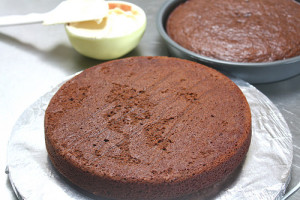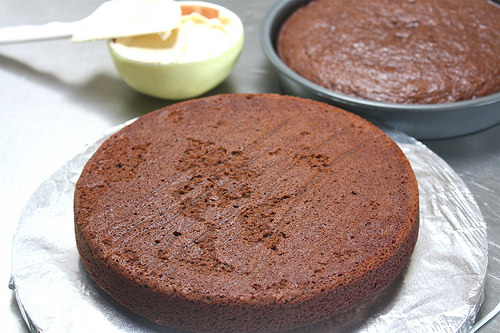Short Answer:
Yes, Baking is Paleo, but…

Traditional vs. Paleo Baking
Baking is a cooking method that uses dry heat convection using an oven. Baking is used to prepare cakes, pastries, pies, tarts, cookies and more. These items are collectively known as baked goods and often sold in bakeries. But these aren’t the only foods you can bake. All types of food can be baked. You can bake fish, meats and even vegetables.
Paleo baking differs in traditional baking for one major reason: Ingredients.
With traditional baking, we are accustomed with using ingredients such as flour, baking powder, starch, butter and sugar. These ingredients are nutrient-dense and are definitely not Paleo. In Paleo baking, we follow the all-natural, dairy-free, gluten-free and grain-free and low-glycemic diet.
So What Do I Use in Paleo Baking?
1. Grain Free Flours – We all know that grains are prohibited in the Paleo Diet as they are simple carbohydrates that when broken down becomes sugar. There are a lot of staple grain-free flours available.
Coconut Flour – Coconut flour is made from grinding coconut pulp after squeezed for coconut milk that produces the soft flour. It is high in fiber, protein and fat and a good source of lauric acid, a saturated fat that is thought to support the immune system and thyroid. Coconut flour is absorbent too so it may require additional eggs or liquid when used for baking. A good rule of thumb is to use one egg for each tablespoon of coconut flour.
Almond flour – Almond flour is made from blanched, finely ground nuts. It is high in protein, rich in vitamins and minerals.It can be used from making pancakes to crispy cookies.
Hazelnut and Pecan flours – Hazelnut and pecan flours are made from grinding hazelnuts and pecans. These nut flours are rich and best used with combination of almond flour. They are good sources of fiber and protein too. They are great used for making pies and cookies.
2. Fats and Oils – Choose fats or oils that offer nourishment.
Coconut oil – Unrefined extra-virgin coconut oil provides a good taste to baked dishes. It is stable oil even at very high temperature.
Palm Shortening – It is a good substitute to butter. It can be used interchangeably with coconut oil.
Grass-fed butter, Clarified Butter and Ghee – Grass-fed butters are suggested in Paleo cooking as it is free from industrial feeds and hormones. When produced from the cream of grass-fed cows, it is a good source of fat soluble vitamins and beta carotene.
Clarified Butter and Ghee on the other hand comes from butter and have been slowly melted and filtered to remove their milk solids resulting to removal of offending proteins and sugar. They can tolerate high heats up to 485°F.
3. Natural Sweeteners – We are already aware that sugar is not Paleo thus, it should be avoided.
4. Pure Maple Syrup – Maple syrup is known to be Paleo-approved so it can be used as a substitute for sugar in baking. Graded B maple syrup is preferred for its high level of sweetness and great flavor. It doesn’t break down during the baking process.
5. Coconut Milk – Coconut milk has a strong flavor of coconut which works very well with baking and other cooking methods. It is produced by combining coconut and water. It is a good alternative to dairy.
6. Pastured Free-Range Eggs – Make sure that the eggs you are using are pastured or free-range eggs. This means that no pesticides, hormones or antibiotics treated the poultry that produced the eggs. Eggs provide leavening to baked goods too aside from binding the food.
7. Chocolate – Yes, chocolate can be used in baking. As long as the chocolate is unsweetened pure cacao powder or pure baking dark chocolate. Anything less than 100% pure cacao powder has sugar content.
8. Baking Soda – While baking powder is not allowed in Paleo baking because of its gluten aluminium and cornstarch contents, baking soda is Paleo-friendly. Baking soda a sodium bicarbonate that comes from natural mineral that was originally mined. It is a classic leavening agent that allows “rising” in your baked goods.
9. Sea Salt – Salt is not common in the Paleo diet. But as sea salt do not require more processing and high in minerals, it can be used in a little amount in baking.
All you ever wanted to know about Baking and Paleo
Eat Drink Paleo.
http://eatdrinkpaleo.com.au/paleo-recipes/paleo-baking/
Multiply Delicious. Stocking Your Paleo Baking Pantry
http://www.multiplydelicious.com/thefood/stocking-your-paleo-baking-pantry/
Paleo Hacks. The 3 Best Paleo Flours
http://blog.paleohacks.com/3-best-paleo-flours/
Paleo Leap. Coconut vs Almond Flour
http://paleoleap.com/coconut-vs-almond-flour/
The Paleo Mom. Important Pantry Items for the Paleo Baker
http://www.thepaleomom.com/2012/01/important-pantry-items-for-paleo-baker.html
Paleo Plan. Is Baking Powder Paleo?
http://www.paleoplan.com/ingredients/baking-powder/
Did we miss anything?
Comment below and let us know what you think. Do you agree with our conclusion?
photo credit: IMG_5132

